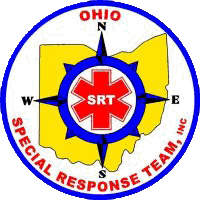Search & Rescue is NOT a Spectator Sport!
- OSRT Information

- Sep 20, 2018
- 3 min read
Updated: Jan 11, 2023
Mansfield, Ohio - When the members of the Ohio Special Response Search & Rescue Team deploy, nobody gets to sit back, take a snooze, and watch the action. Our people and our search dogs ARE the action.

That action begins with a request to assist from local law enforcement that generates a telephone alert to all OSRT members. (We also receive requests for assistance directly from families. However, there is a process families need to follow to activate our team. More on this in another post.) Much like a volunteer fire department, those members who are available immediately begin moving toward the scene. They each arrive fully equipped to spend whatever time is necessary on site (in some cases 72 hours or more). Members who are not immediately available will finish up their jobs or other responsibilities, then come together as quickly as possible for the second wave of searchers, or even the third wave.
While the teams are arriving & gearing themselves up, the first OSRT responder on scene is collecting as much detailed information as possible about the lost person incident. As the first rapid search team comes together, they receive a fully interactive briefing containing data that positions that initial team as close as possible to the last known location of the lost person.
The search is on! But the interesting part of a seriously trained search & rescue team is the integrated approach. Even while the OSRT team is being briefed, their drone may already be flying a search grid around the immediate area, focusing its high definition or thermal camera in a 360° swath from 100+ feet up. Images are delivered to large monitors in the team command vehicle where they are viewed in real time while being recorded for additional analysis.
In a recent search event, the OSRT drone picked out the thermal image of a 2.5” x 1.5” cloth hand warmer in dense grass from an altitude or 180 feet.
The initial rapid search teams fan out & very quickly cover a large area either along the person’s projected path, or in an expanding 360° containment circle. These rapid teams are searching for clues left behind as the person moves through the area. These clues could be dropped possessions, discarded trash, broken vegetation, even tracks or displaced ground cover. Each clue is carefully catalogued, marked by GPS & flag, fully described to the command post, then left in place for later review as potential evidence.
As the search continues, the OSRT search dog teams, handlers, & flankers enter the mix. These highly trained dogs use ground scent, air scent, even water scent, to track down lost people. Their success rate in locating their target is extremely high.
And the beat goes on. After a very brief amount of time, OSRT has brought to bear an enormous array of search & rescue expertise with one goal in mind: Stay in the field until they find your lost loved one.
Want to know how the team simplifies chaos? Check us out on Facebook or via the Ohio Special Response Team web site. Better yet: Join up and make a difference in peoples’ lives!
Alan Plastow is a faculty member teaching the Certificate in Applied Project Management at The University of Akron. He's also a member of the Medina County Child Abduction Response Team, and the American Red Cross and Team Rubicon disaster response teams.























Comments